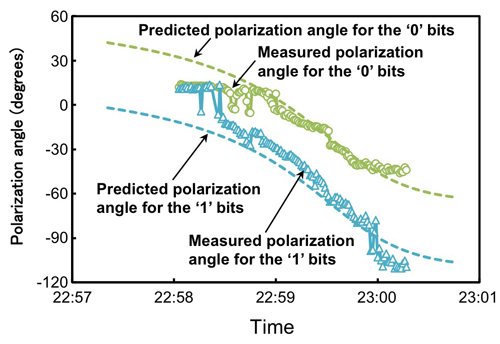11.07.2017
- A big step toward building a truly-secure global communication network -









A team of Chinese researchers has reported the first successful ‘quantum teleportation’ to space. Using the Micius satellite, launched in August 2016 specifically to perform such cutting-edge quantum experiments, the scientists used pairs of entangled particles to recreate exactly the properties of a photon on Earth in a photon in orbit.
Ji-Gang Ren, of the University of Science and Technology of China, and colleagues write that they have accomplished “the first quantum teleportation of independent single-photon qubits from a ground observatory to a low Earth orbit satellite—through an up-link channel – with a distance up to 1,400 km”.
Though this feat is called quantum teleportation, no actual teleportation of objects occurs. It’s a way of transmitting information about a particle; while it sounds exotic, it is routinely used in laboratories on Earth.
Entanglement is a property of particles created at the same time which exist in a shared state, such that actions affecting one particle also affect the other. This holds even when the particles are separated by a great distance.
In 1993, physicists realised entanglement could be used to effectively copy the quantum state of a particle and paste it onto another particle, making the second particle identical to the first in all respects except location. It is as if the first particle has been cloned, or teleported.
Since the teleportation copies the quantum state of the first particle exactly, it could be used to transmit qubits, the quantum bits used in quantum computation.
Given there is no physical teleportation and, as noted above, the experiment is commonly performed in ground-based labs, what’s the big deal?
First, it’s an astonishing engineering achievement to manage the required precision and sensitivity when a distant satellite moving at great speed is involved. Second, the researchers have their eyes on what comes next, and they’re thinking big: as they note, this is “the first ground-to-satellite up-link for faithful and ultra-long-distance quantum teleportation, an essential step toward global-scale quantum internet”.
Quelle: COSMOS